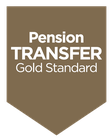Wealth management
ISAs 101: your guide to Individual Savings Accounts

ISA stands for individual savings account and is an investment vehicle that has great tax breaks. It allows you to earn interest on cash savings or dividends from investments without paying income tax or capital gains tax.
To ensure this tax break is not exploited, there is a restriction placed on how much you can pay into them each tax year.
- How do they work?
- Can you withdraw money from your ISA and put the money back later?
- Can you transfer an ISA to another ISA?
- What happens to your ISA upon the death of the plan holder?
- What protection does your ISA have?
How do they work?
Each tax year, which runs from 6 April to 5 April the following year, you have an ISA allowance. Currently the ISA allowance is £20,000 for this tax year. This means you have until 5 April to use your ISA allowance for this tax year.
Use it or lose it. If you miss the tax yearend deadline, you cannot back pay to catch up missed contributions. Any money you pay into an ISA will count towards your ISA allowance for the following year. This regularly catches people out with busy lives each year.
To be eligible to open an ISA, you need to:
- Be 16 or older for a cash ISA
- Be 18 for stocks and shares ISA
- Be the parent or guardian of a child under 18 to open a Junior ISA
- Be 18 to 39 to open a lifetime ISA
- Be a resident in the UK (or a Crown employee if abroad)
An ISA can only be held in one person's name. It’s not possible to have an ISA in joint names. Hence the title individual Savings Account.
There are two main types of ISA: cash ISAs and stocks and shares ISAs. There are also some specialist ISAs to choose from.
Cash ISAs
These are similar to regular bank / building society savings accounts with the advantage of a tax efficient wrapper. They should be used as short-term investments ie up to 5 years for maximum effect. Beyond this time scale inflation has the potential to reduce the value of the funds. There are two basic types of cash ISA:
- Instant access: Allows you to withdraw and deposit funds in line with the provider’s terms.
- Fixed term: Your money is wrapped up for set period of time during which you receive a fixed rate of interest but have no access. As the interest rates rise there are some very good rates on offer.
Stocks and Shares ISAs
These are stocks and shares investment accounts that use your ISA allowance as a wrapper to make them tax efficient. There are a huge variety on offer covering several investment styles and client attitudes to risk. This can make it very hard to compare apples with apples. Care should be taken also to ensure that any charging is made clear from the start.
As with most investment-based products your money is at risk as the value of stocks and shares can fluctuate. However over the longer term (5 years plus) you have the potential to receive better returns than say with Cash ISAs. These tend to form the basis of most investors portfolios as the starting point due to their tax efficiency.
Specialist ISAs
- Junior ISAs: for under 18s only, limited up to £9,000 per annum currently. Can be Cash or Stocks and Shares based.
- Lifetime ISA: for adults under 40 saving for retirement or to buy their first home. At a very high level they let you earn a 25% bonus on savings up to £4,000 a year. Care and advice should be taken because although you can access the funds whenever you like. You only get the bonus if you use the cash to either buy your first home or take it out after you turn 60. If you withdraw the money for any other reason, you will lose 25% of it as the government takes its money back plus a little extra.
- Innovative finance ISA: Peer-to-peer investments which earn interest by lending money to individuals, businesses and property developers. These usually require financial advice to be taken to ensure suitability.
- Business Property Relief (BPR) based ISAs: ISAs are not totally tax free; they are liable to Inheritance Tax upon death. Using an ISA that can take advantage of BPR can help ringfence funds from inheritance tax. These tend to be higher risk options and should be discussed with an IFA before proceeding.
You can open a Cash ISA either in a bank/building society branch, online, by post or over the phone, depending on the type of account and provider you choose.
Investment ISAs are similar but best taken out via an Independent Financial Adviser who can source the right plan for your circumstances. They should also ensure that the scheme is covered by the Financial Conduct Authority and the Financial Services Compensation Scheme. They will also explain the risk level and ensure that you do not over commit too much of your hard-earned funds in one go. For some Cash ISAs you can start with as little as £1. For investment ISAs this tends to be higher for lump sum investments. A regular premium amount typically start around £50 pm. There is no right amount to start with. It will depend on your own situation. Always ensure that you have enough hands on cash available to cover emergencies. As a guide this is typically 3 – 6 months of expenditure. You will also need to supply your National Insurance number. Always read the small print before signing to ensure that you understand what you are investing into.
How many ISAs can you have?
You can build up several ISAs over the years. You can consolidate your past ISAs by transferring them to your current ISAs if they offer better terms.
You can only pay into one cash ISA, one stocks and shares ISA, one lifetime ISA and one innovative finance ISA in each tax year, and the total you invest across the types of account must not exceed your ISA allowance – currently £20,000.
You can transfer to a new ISA within a tax year - but only if you take all the money you've already saved into the old ISA to your new one.
If you have opened a junior ISA for a child, this is not included in your £20,000 allowance (it’s the child’s allowance, which is £9,000 a year currently).
Can you withdraw money from your ISA and put the money back later?
This depends on the terms and conditions of your ISA, so ensure you find out before opening a new ISA whether:
Your ISA is flexible
- You can withdraw money and pay it back in during the same tax year without it affecting your ISA allowance (eg if you deposit £10,000 then withdraw the same amount, you can still pay in a total of £20,000 this tax year)
- You can also withdraw any ISA money you have from previous tax years, and have until the end of the tax year to pay it back into the same ISA.
Always, check the small print before doing anything as some ISAs may limit the number of transactions you can make in a year. Not all providers allow transfers either, you should also check the T&Cs before making a withdrawal.
Your ISA is not flexible
- Any money you pay in then withdraw, still counts towards your remaining ISA allowance (eg if you pay in then withdraw £5,000, you can only deposit up to £15,000 for the rest of this tax year).
- Deposits that exceed the allowance will be rejected
Once taken out of an ISA your money will lose its tax-free status if you pay it into a normal savings account.
Can you transfer an ISA to another ISA?
You may want to move holdings in a previous year’s ISA to a new one if the rate of return or fees are more competitive.
This is allowed under the rules; just don’t attempt a transfer until you’ve checked whether your new ISA allows transfers in.
To retain your tax advantages, you need to transfer your ISA directly from one provider to another.
However, if you try to move your ISA by withdrawing the funds, you will lose its ISA status, as it’s no longer within the tax-free wrapper. You may find that a lifetime of tax efficient savings is lost by making this common mistake.
What happens to your ISA upon the death of the plan holder?
Upon death an ISA becomes part of your estate and loses its tax-free status, meaning it’s liable to income tax.
The exception is if you leave behind a spouse or civil partner. Then they would see an amount equivalent to your ISA added to their current year’s allowance, tax-free.
E.g. you pass on leaving £20,000, your spouse or civil partner would receive a one-off addition to their own ISA annual allowance of this sum, giving them a total allowance of £40,000 to invest.
Even if you leave your ISA to somebody else in your will, your spouse or civil partner will still gain the £20,000 additional ISA allowance.
What protection does your ISA have?
The Financial Services Compensation Scheme (FSCS) protects the first £85,000 of any cash or investments held in ISAs with each separately registered institution.
To qualify, your ISAs must be in a financial company, such as a bank or investment house, that’s regulated by the Financial Conduct Authority.
CARE, if you have more than £85,000 in savings with one institution, or two separate companies within the same group, you could end up out of pocket should the group go under as the FSCS only guarantees a payout of £85,000.
The above should be viewed as impartial guidance as to ISA options and what they might mean. The final decision to invest would be yours but as with any investment, if it’s not an area you are completely familiar with you should seek Independent Financial Advice.
Tees are here to help
We have many independent financial advisers who are based in:
Cambridgeshire: Cambridge
Essex: Brentwood, Chelmsford, and Saffron Walden
Hertfordshire: Bishop's Stortford and Royston
But we can help you wherever you are in England and Wales.
This material is intended to be for information purposes only and is not intended as an offer or solicitation for the purchase or sale of any financial instrument. It is not intended to provide and should not be relied on for accounting, legal or tax advice, or investment recommendations. Past performance is not a reliable indicator of future returns and all investments involve risks. Some information quoted was obtained from external sources we consider to be reliable.
Tees is a trading name of Tees Financial Limited which is authorised and regulated by the Financial Conduct Authority. Registered number 211314. Tees Financial Limited is registered in England and Wales. Registered number 4342506.
Chat to the Author, Cara Lambert
Senior Wealth Planner, Wealth Management, Bishop's Stortford office
Meet Cara
- Areas of expertise
- Accreditations


